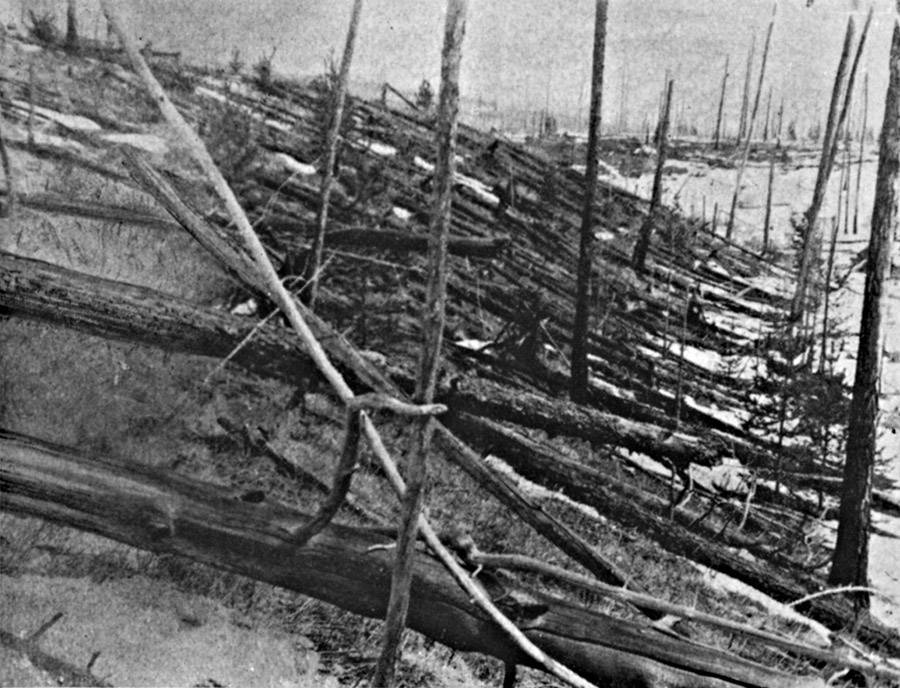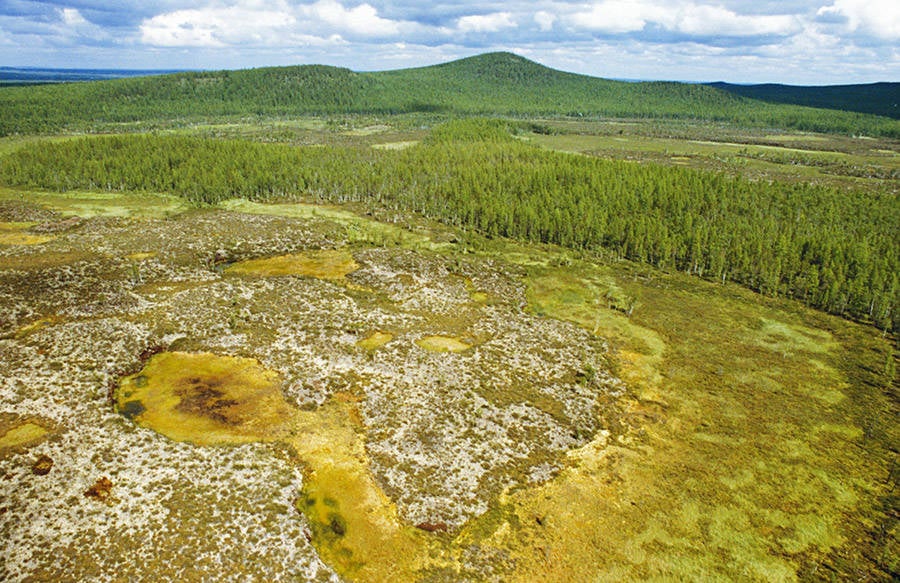The Tunguska Explosion: One Of History’s Most Baffling And Interesting Events

Universal History Archive/Getty ImagesTrees knocked over from the Tunguska event, one of the world’s most baffling but interesting historical events ever. 1908.
The Tunguska event is one of the most mysterious interesting historical events ever. To this day, experts still do not know exactly what caused it.
On June 30, 1908, local residents in Evenki, Russia reported a column of blue light moving across the sky. Some said it was even as bright as the sun. Ten minutes later they reported something that sounded like heavy artillery fire, moving from the east to the north.
Then, a shock wave blew through the town, knocking people off of their feet and glass out of windowpanes.
Despite hearing all of the sounds of an explosion, and an explosion registering at seismic stations across Eurasia and even Great Britain, residents of Evenki and the surrounding towns never reported seeing an actual explosion.
For days the skies above Asia and Europe seemed to glow, a result of ice particles that formed at high altitudes. Atmospheric pressure changes were detected across the world, from the U.S. to Great Britain.

Sovfoto/UIG/Getty ImagesYoung forest at the site of the Tunguska explosion. 2008.
Though no one had reported an explosion, a blast site was found. More than 800 square miles of forest — roughly 80 million trees — in eastern Siberia had been completely flattened, with no explanation at all. Scientists initially believed it was the result of an impact, though no crater was ever located.
However, for an area that large to be completely flattened, the energy of the airburst would have had to have been roughly 10-15 megatons, the same amount of energy put out by the atomic bomb the U.S. dropped on Bikini Atoll.
Scientists originally pushed themselves to discover what had caused the blast, as an explosion of that magnitude could easily wipe out an entire metropolitan area. Over time, however, and since nothing like it has happened again, they have let investigations fall by the wayside.
The most common explanation now is that the event was caused by the air burst of a meteoroid, as it exploded above the atmosphere.





